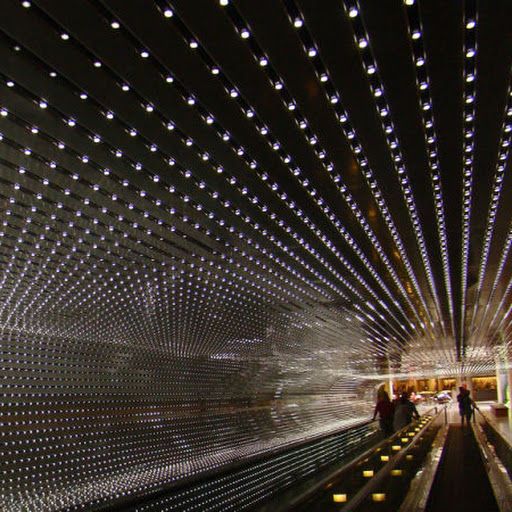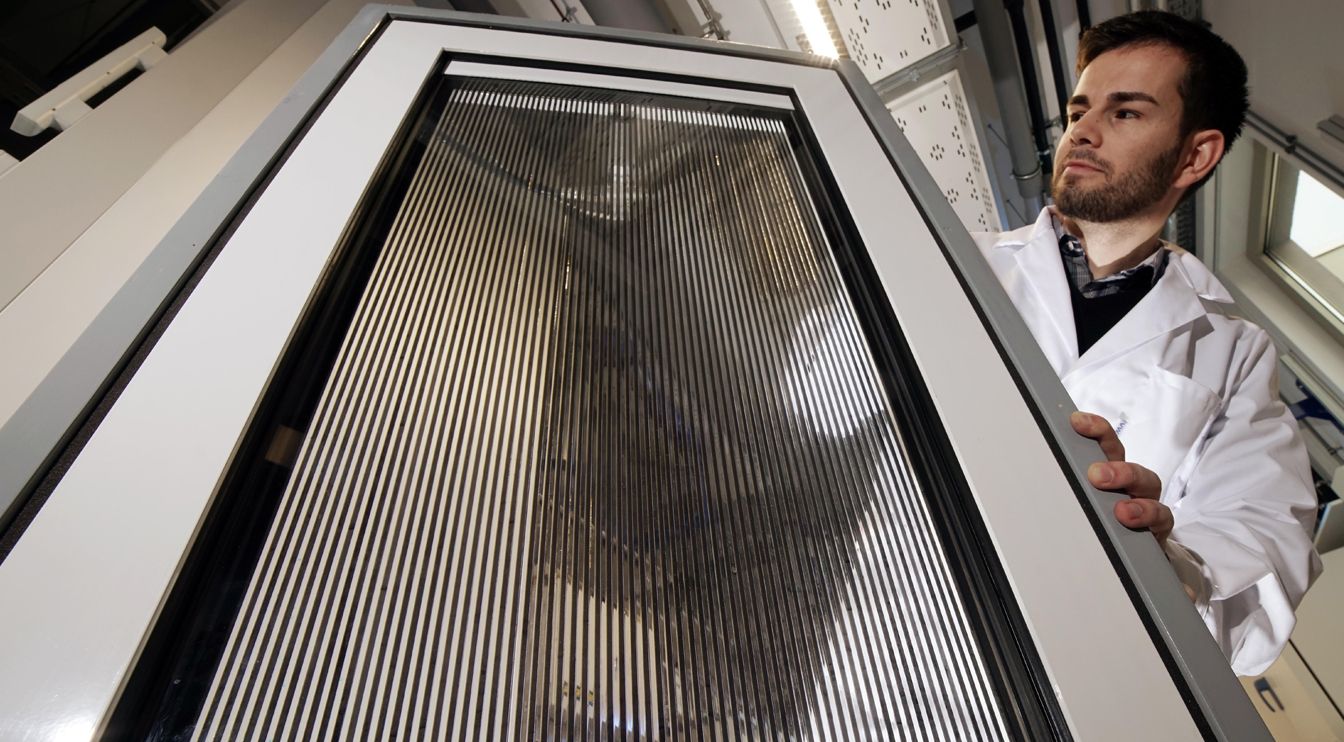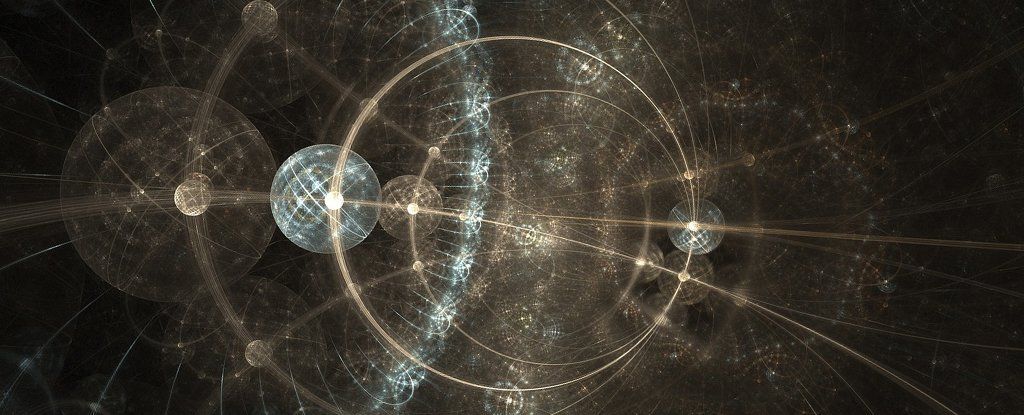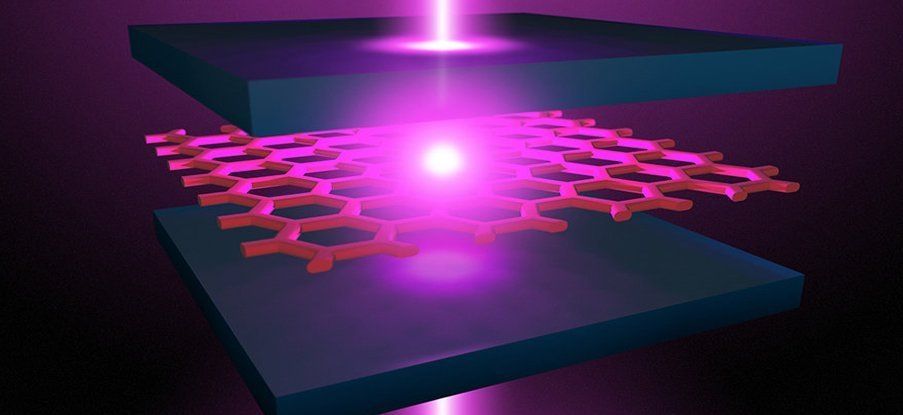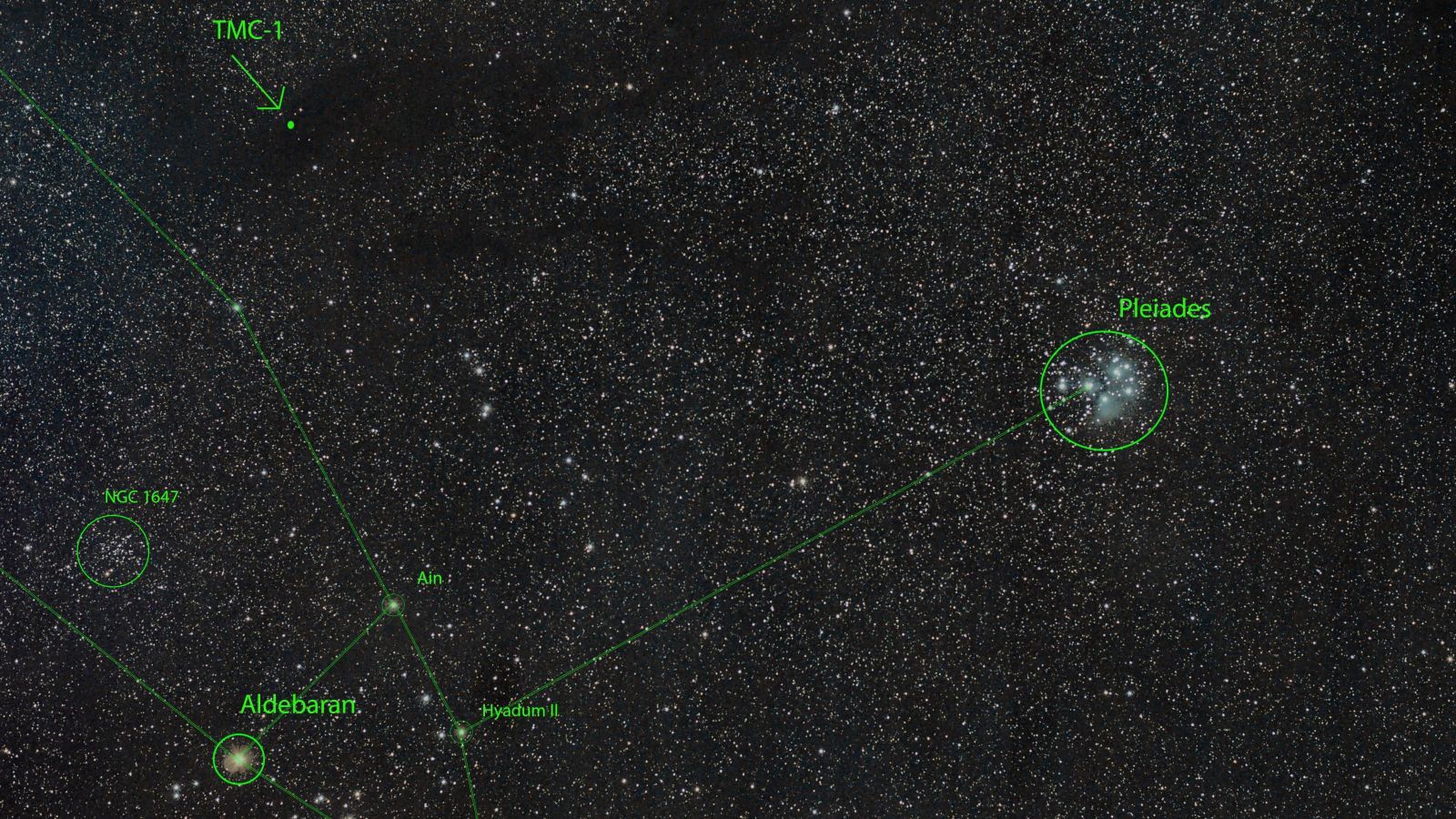There’s an unidentified source of infrared throughout the universe. By looking at the specific wavelengths of the light, scientists think that come from carbon—but not just any carbon, a special kind where the atoms are arranged in multiple hexagonal rings. No one has been able to spot one of these multi-ring “polycyclic aromatic hydrocarbons,” or PAHs in space—even though the infrared emissions imply that these PAHs should make up 10 percent of the universe’s carbon. Now, scientists have found a new hint.
A team of researchers in the United States and Russia are now reporting spotting a special single-carbon-ring-containing molecule, called benzonitrile, with a radio telescope in a part of space called the Taurus Molecular Cloud-1. Benzonitrile only has one hexagonal ring of carbon, so it’s not a poly cyclic aromatic hydrocarbon itself. But it could be a potential precursor and could help explain the mysterious radiation.
Before you even ask, yes, this “aromatic” benzonitrile molecule has a smell. “I can tell you from personal experience it smells like almonds,” study first author Brett McGuire from the National Radio Astronomy Observatory told Gizmodo, who has encountered the molecule in the lab.
